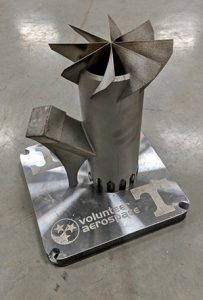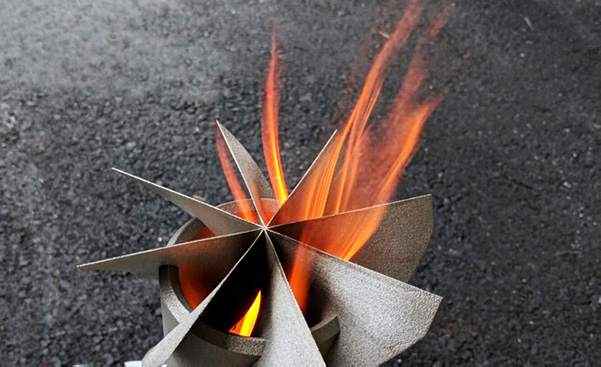Engineering and Marketing Take Off Like a Rocket
The Marketing 462 team knew it was going to need an engineer when it launched a plan to build a better rocket stove. They reached out to Matthew Mench, department head in mechanical, aerospace, and biomedical engineering, and Todd Reeves, director of Engineering Professional Practice, to find a student who fit the task.

Enter aerospace engineering student Robert Nickel, who knows a thing or two about actual rockets.
“For the last few years, I have led the Hybrid Rocket Development Team for the Student Space Technology Association,” said Nickel, who brought multiple skills to the table. “When I started collaborating with the marketing department, they were in need of a student with experience in CAD modeling to help prepare files for their 3D-printed rocket stove.”
And what is a rocket stove, anyway? It’s a do-it-yourself design that many outdoor enthusiasts assemble in their backyards with welded scrap material.
“It is called a rocket stove because the design sucks in air at a fast rate, which produces a rocket-like noise,” said Luke Whitehead, a business student on the marketing-class team. Their task was to design a more efficient stove than usual, to be 3D-printed in metal by their project partners at Knoxville company Volunteer Aerospace.
The heat from the fire in a rocket stove creates a convective current that pulls more air into the device, which burns more of the fuel away, minimizing smoke and embers.
“The rocket stove design, if done properly, results in almost no smoke being produced and a more efficient burn,” said Nickel.
“Since Robert has CAD experience and heat-transfer knowledge, he was able to fill the knowledge gap on what sort of designs would work and what would not,” said Whitehead. “It allowed us to focus more on other features that would add to marketability—user friendliness, etc.”
Nickel was able to model the airflow and heat transfer through the rocket stove and identify additional features to improve the heating of a small cooking pot.

“The end result was a double-walled rocket stove, using air inside the wall to insulate the stove and reduce heat loss,” said Nickel. He also added a turbine to swirl the incoming air, further enhancing the efficient burn.
“Such a design would be difficult with traditional manufacturing techniques, as the stove would have to be made in several pieces, then welded or bolted together,” he said. “But additive manufacturing allows for the entire stove to be printed in one piece.”
The mix of marketing and engineering design efforts gave both students new insight into their respective fields and the possibilities of collaboration.
“This was a great opportunity to put several engineering skills I’ve developed through my years at UT to use in a real-world project,” said Nickel. “I was able to utilize concepts learned experimenting with hybrid rocket propulsion to improve combustion in the limited space available in the stove.”
“We each got a better appreciation for what the other college can bring to the table,” said Whitehead. “As a business student, I tend to think in terms of what will sell, but sometimes do not stop to think about the engineering that must go into products.”
